The Quran and Its Biblical Reflexes
The Quran and Its Biblical Reflexes
Investigations into the Genesis of a Religion
Mark Durie
LEXINGTON BOOKS
Lanham Boulder New York London
Published by Lexington Books
An imprint of The Rowman & Littlefield Publishing Group, Inc.
4501 Forbes Boulevard, Suite 200, Lanham, Maryland 20706
www.rowman.com
Unit A, Whitacre Mews, 26-34 Stannary Street, London SE11 4AB
Copyright 2018 by The Rowman & Littlefield Publishing Group, Inc.
All graphics courtesy of the author.
All rights reserved . No part of this book may be reproduced in any form or by any electronic or mechanical means, including information storage and retrieval systems, without written permission from the publisher, except by a reviewer who may quote passages in a review.
British Library Cataloguing in Publication Information Available
Library of Congress Cataloging-in-Publication Data Available
LCCN 2018946880 | ISBN 9781498569453 (cloth : alk. paper) |
ISBN 9781498569460 (electronic)
 The paper used in this publication meets the minimum requirements of American National Standard for Information SciencesPermanence of Paper for Printed Library Materials, ANSI/NISO Z39.48-1992.
The paper used in this publication meets the minimum requirements of American National Standard for Information SciencesPermanence of Paper for Printed Library Materials, ANSI/NISO Z39.48-1992.
Printed in the United States of America
Contents
Relexification of linguistic signs |
Carbon dating of early Quranic manuscripts |
Topics in Quranic Theology |
Average Lexical Distance trend, srah s, part 1 |
Average Lexical Distance trend, srah s, part 2 |
Distribution of srah s by Average Lexical Distance |
Ranking of srah s by AFD vs. ALD: pre-transitional, post-transitional, and mixed |
Formulaic Distance of formulae in Q73 |
Formulaic Distance of formulae in Q22 |
Formulaic Distance of formulae in Q29 |
Formulaic Distance of formulae in Q8 |
Ranking of srah s by AFD vs. ALD, separating mixed srah s |
Pre-transitional srah s |
Post-transitional srah s |
Nldekes classification of srah s, by AFD vs. ALD |
Srah s which say the Messenger or messengers are only a warner |
Srah s which refer to requests to hurry or bring on the punishment |
Srah s with athqa cause to taste |
Srah s with abara be patient |
Srah s with at least one of the two features of the Eschatological Crisis (cf. Table 3.2) |
Srah s with jhada, jihd , or mujhid struggling with others |
Srah s with references to migration |
Srah s with obey Allah and the Messenger |
Srah s with references to hypocrites and hypocrisy |
Srah s with references to those in whose hearts is a disease |
Srah s with references to nab prophet |
Phono-semantic matching |
Srah s with references to shayn (indef.) |
Srah s with references to al-Shayn (def.) |
Srah s with references to jinn |
Srah s rejecting that Allah has offspring or rejecting that Isa is Allah or the son of Allah |
Srah s with references to al-Mah |
Stories of the Fall |
References to fighting (Form III derivatives of q-t-l ) |
The historical relationship of Judaism and Christianity |
Classification of srah s by theological characteristics |
Pre-transitional srah s by Eschatological Crisis features |
Average Formulaic and Lexical Distance of srah s |
Verse length, AFD, and ALF of passages in Q85 |
Formulaic and Lexical Distance of passages in Q74 |
Exclusion from the Sacred Mosque |
Two dimensions of disbelief |
The named messengers of the Quran |
Stories of the Fall of Ibls |
Stories of the Fall of dam |
Summary of forms discussed in chapter 6 |
The spotlight of this book is on the Quran. Its purpose is to advance our understanding of the Quran and Quranic Theology in relation to the Bible and to Biblical Theology. However, it has been deliberately written for a broad readership, not only for scholars of the Quran but also for others who are interested in the Quran, its theology, and its treatment of Biblical reflexes.
In todays world the question of the relationship between the Bible and the Quran is not merely an academic one. There has been a long history of physical and intellectual conflict between Muslims and Christians, and the ongoing realities of jihd , religious persecution, suspicion, prejudice, and fear inevitably influence theological engagement between Christianity and Islam. There is considerable psychological pressure in all sorts of directions upon academic activities which seek to explore the interface between the faiths.
It is regrettable that in some cases western scholars have not maintained scholarly objectivity in dealing with the Quran. An example is found in Watts revision of Bells Introduction to the Quran . Watt commented that he altered passages which conveyed Bells view that Muammad was the author of the Quran, because he considered it an affront to Muslims understanding of Allahs authorship:
it has become imperative for a Christian scholar not to offend Muslim readers gratuitously, but as far as possible to present his arguments in a form acceptable to them. Courtesy and an eirenic outlook certainly now demands that we should not speak of the Quran as the product of Muhammads conscious mind... I have therefore altered or eliminated all expressions which implied that Muhammad was the author of the Quran, including those that spoke of his sources or of the influences upon him. (Watt and Bell 1970, vi)
In keeping with standard principles of scholarly objectivity, my intention is to treat academic matters on the basis of available evidence, without regard for religious sensibilities.
The philosopher Ludwig Wittgenstein (1958, 114) once wrote: One thinks that one is tracing the outline of the things nature over and over again, and one is merely tracing round the frame through which we look at it. He was reflecting that, far from merely describing the nature of things, propositions say as much about the language they are couched in as about the reality of what they purport to refer to. The challenge for any scholar is that a part of what they trace is but the frame through which they are peering. One way to help overcome this limitation is by using diverse frames, which reveal how an object looks from different angles.
The past forty or so years of Western scholarship on the Quran have involved a series of exercises in de-framing and re-framing the text of the Quran. My own academic training is in linguistics and theology, and this has influenced how the Quran is viewed in this work. It is my sincere hope that the perspectives offered here, including some fresh de-framings and re-framings of the Quranic text, will make an enduring contribution to the larger scholarly endeavor of seeking to understand the Quran better for what it actually is.

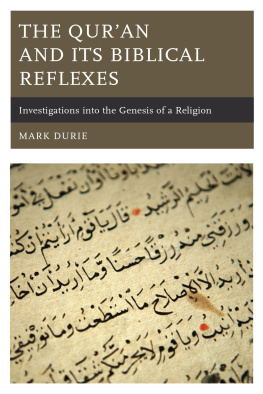
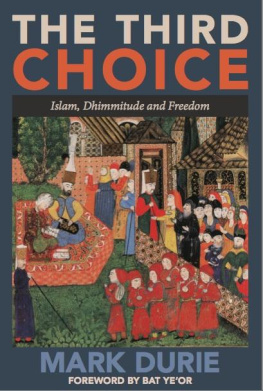

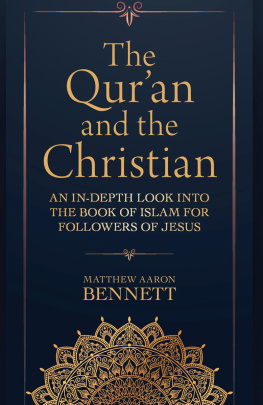



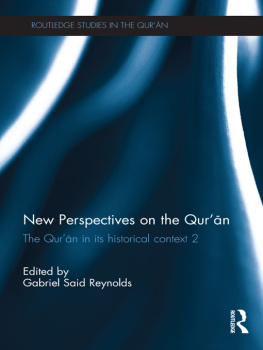
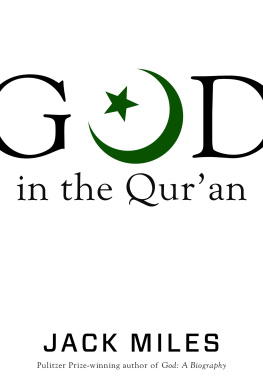



 The paper used in this publication meets the minimum requirements of American National Standard for Information SciencesPermanence of Paper for Printed Library Materials, ANSI/NISO Z39.48-1992.
The paper used in this publication meets the minimum requirements of American National Standard for Information SciencesPermanence of Paper for Printed Library Materials, ANSI/NISO Z39.48-1992.